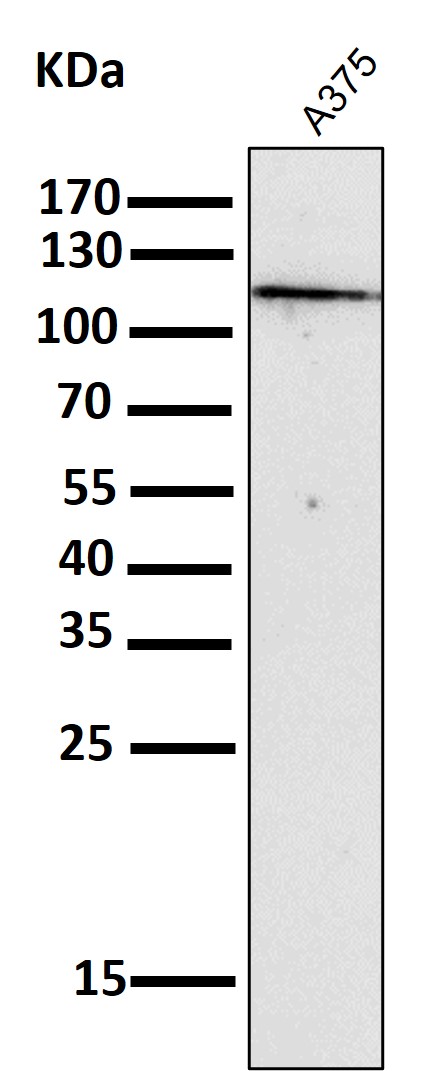

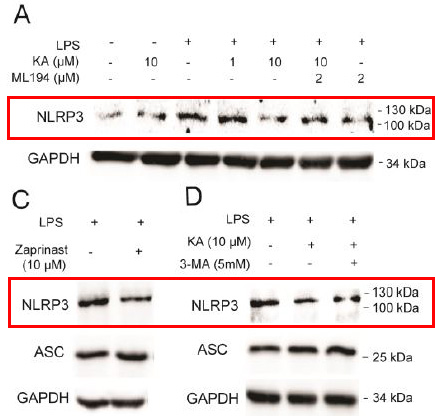
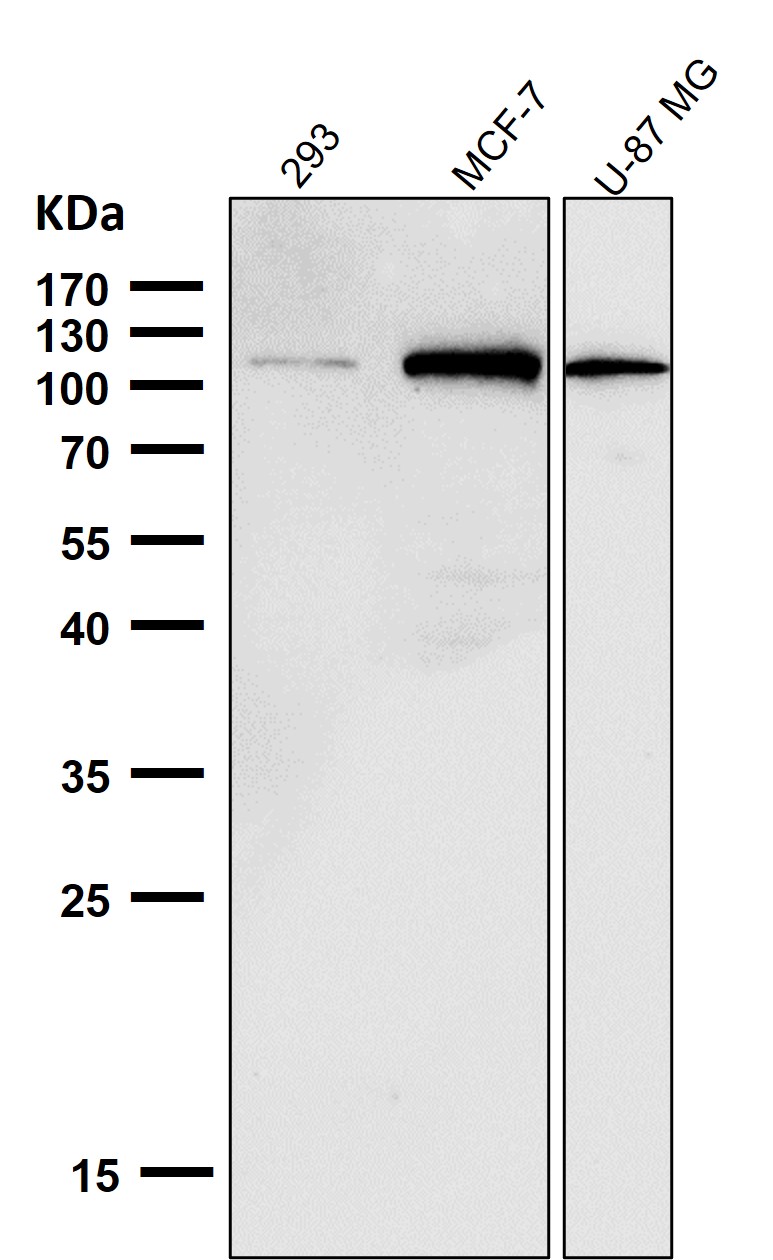
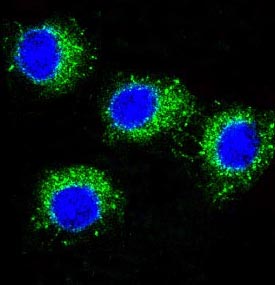
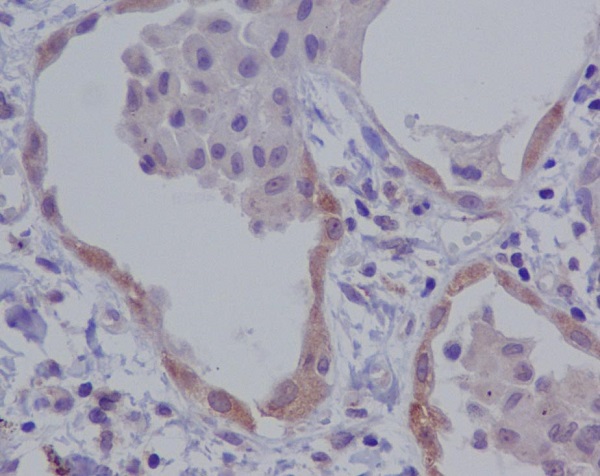
| WB | 1/1000-1/2000 | Human,Mouse,Rat |
| IF | 咨询技术 | Human,Mouse,Rat |
| IHC | IHC:1/100-1/200;IHF:1/50-1/200 | Human,Mouse,Rat |
| ICC | 1/50-1/200 | Human,Mouse,Rat |
| FCM | 咨询技术 | Human,Mouse,Rat |
| Elisa | 咨询技术 | Human,Mouse,Rat |
| Aliases | FCU; MWS; FCAS; Cias1; Mmig1; NLRP3; Pypaf1; AII/AVP; AGTAVPRL; Cryopyrin;;NLRP3 |
| WB Predicted band size | 118 kDa |
| Host/Isotype | Rabbit IgG |
| Antibody Type | Primary antibody |
| Storage | Store at 4°C short term. Aliquot and store at -20°C long term. Avoid freeze/thaw cycles. |
| Species Reactivity | Human,Mouse,Rat |
| Immunogen | A synthesized peptide derived from human NLRP3 |
| Formulation | Purified antibody in PBS with 0.05% sodium azide,0.05% BSA and 50% glycerol. |
+ +
以下是关于NLRP3(NALP3)抗体的3篇代表性文献摘要:
1. **文献名称**:*NLRP3 inflammasome inhibition by MCC950 reduces apoptotic and inflammatory burden in diabetic cardiomyopathy*
**作者**:Luo, B., Li, B., Wang, W., et al.
**摘要**:该研究使用NLRP3特异性抗体及抑制剂MCC950.证明抑制NLRP3炎症小体可减轻糖尿病心肌病中的心肌细胞凋亡和炎症反应,为靶向治疗提供了实验依据。
2. **文献名称**:*A novel anti-NLRP3 monoclonal antibody attenuates inflammation in a mouse model of gouty arthritis*
**作者**:Coll, R.C., Robertson, A.A., Chae, J.J., et al.
**摘要**:研究开发了一种新型抗NLRP3单克隆抗体,通过阻断炎症小体活化显著降低痛风性关节炎小鼠模型的关节炎症及IL-1β释放。
3. **文献名称**:*Targeting NLRP3 inflammasome with antibody-based therapeutics for autoimmune diseases*
**作者**:Schroder, K., Tschopp, J.
**摘要**:综述了针对NLRP3的抗体药物在类风湿性关节炎、炎症性肠病等自身免疫疾病中的治疗潜力,强调抗体阻断IL-1β通路的临床转化前景。
(注:若需具体文献来源,建议通过PubMed或Google Scholar检索上述标题及作者获取全文信息。)
The NALP3 (NACHT, LRR, and PYD domains-containing protein 3) antibody targets the NLRP3 protein, a key component of the NLRP3 inflammasome—a multiprotein complex central to innate immunity. NLRP3 senses pathogen-associated molecular patterns (PAMPs) and damage-associated molecular patterns (DAMPs), triggering caspase-1 activation and subsequent release of pro-inflammatory cytokines IL-1β and IL-18. Dysregulated NLRP3 activation is implicated in autoinflammatory diseases (e.g., cryopyrin-associated periodic syndromes, CAPS), gout, Alzheimer’s disease, and atherosclerosis.
NALP3 antibodies are primarily used as research tools to study inflammasome activation mechanisms and validate NLRP3 expression in disease models. Therapeutically, monoclonal antibodies targeting NLRP3 or its downstream effectors (e.g., anti-IL-1β drugs like canakinumab) aim to suppress excessive inflammation. Direct NLRP3 inhibitors, including antibodies, are under investigation to address conditions driven by inflammasome hyperactivity. Challenges include ensuring specificity to avoid immunosuppression and optimizing delivery to target tissues.
Recent advances highlight NLRP3's role in metabolic and neurodegenerative disorders, expanding potential clinical applications. However, translating NLRP3-targeting antibodies into therapies requires balancing efficacy with safety, given the inflammasome's dual role in host defense and pathologic inflammation.
×